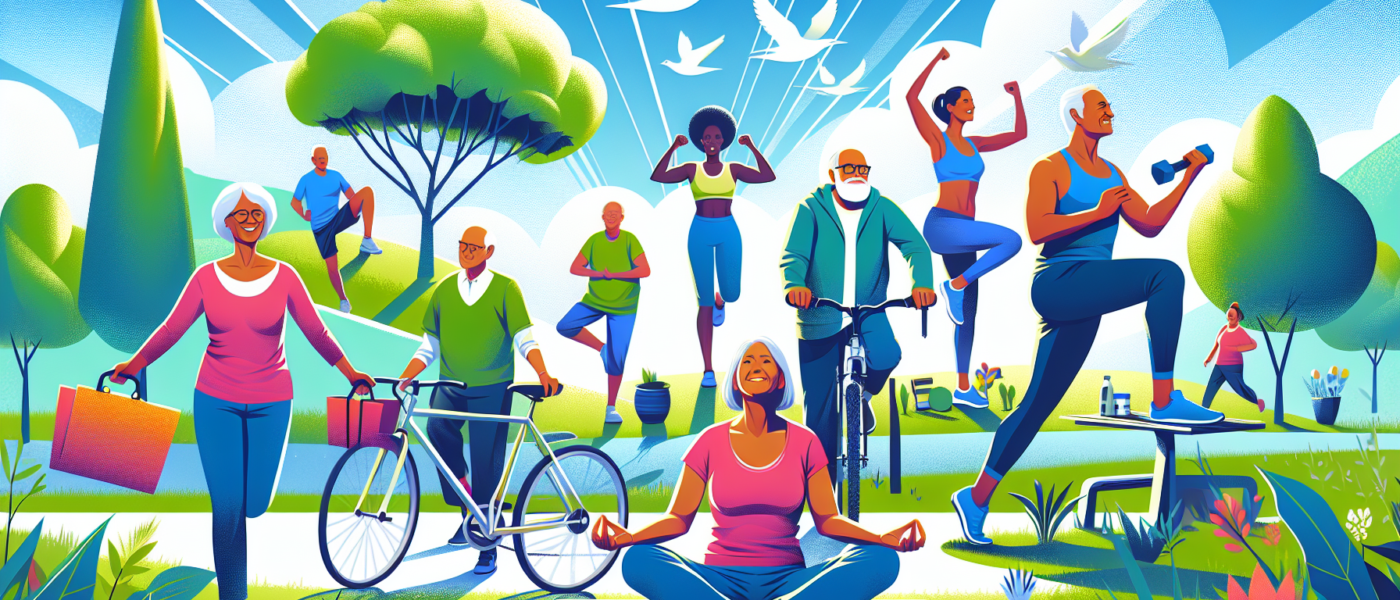Staying Fit After 50: Essential Tips
Key Takeaway
Staying fit after 50 requires adapting to the body’s changing needs, prioritizing joint health, maintaining muscle mass, and incorporating regular cardiovascular exercise. Proper nutrition, adequate recovery, and mental well-being are also crucial components for a holistic approach to fitness in the golden years.
Embrace a Holistic Approach to Fitness
Understanding the Body’s Changing Needs
As we age, our bodies undergo several physiological changes that impact our fitness routines. Muscle mass naturally decreases, joints may become stiffer, and metabolism slows down. Recognizing and adapting to these changes is essential for maintaining overall health and well-being. It’s important to focus on exercises that protect joints, build or maintain muscle, and boost cardiovascular health.
Strength Training for Muscle Preservation
The Importance of Resistance Exercises
Maintaining muscle mass is crucial for staying fit after 50. Muscle mass tends to decrease with age due to a process called sarcopenia. Incorporating resistance training into your exercise regimen helps combat this natural decline by stimulating muscle growth and strength. Aim to perform strength training exercises at least two to three times a week.
Effective Strength Training Exercises
- Weight Lifting: Use free weights or machines to target all major muscle groups.
- Bodyweight Exercises: Push-ups, squats, and lunges are effective ways to build strength without equipment.
- Resistance Bands: These are excellent for adding resistance and improving flexibility.
- Pilates and Yoga: These practices enhance core strength and balance.
Cardiovascular Health and Endurance
Why Cardio Matters
Cardiovascular exercise is vital for maintaining heart health, improving stamina, and supporting weight management. Aim for at least 150 minutes of moderate-intensity aerobic activity or 75 minutes of vigorous-intensity aerobic activity per week. This can be broken down into manageable sessions to fit into your schedule.
Recommended Cardiovascular Activities
- Walking: A low-impact exercise that’s easy on the joints.
- Cycling: Great for improving leg strength and cardiovascular health.
- Swimming: A full-body workout that’s gentle on the joints.
- Dancing: A fun way to stay active and improve coordination.
Flexibility and Balance: The Unsung Heroes
Why Flexibility and Balance Training Are Essential
Flexibility and balance tend to decline with age, which can increase the risk of falls and injuries. Incorporating exercises that improve these aspects can help maintain mobility and independence. Stretching and balance exercises should be a regular part of your fitness routine.
Exercises to Improve Flexibility and Balance
- Yoga: Enhances flexibility, balance, and mental well-being.
- Tai Chi: Known for its slow, graceful movements that boost balance and coordination.
- Stretching: Daily stretching routines can help maintain flexibility.
- Balance Drills: Simple exercises like standing on one leg can improve stability.
Nutrition: Fueling Your Fitness
The Role of Nutrition in Fitness
Proper nutrition becomes even more crucial as we age. A balanced diet supports muscle repair, provides energy, and aids in overall health. Focus on consuming a variety of nutrient-dense foods, including lean proteins, healthy fats, and a wide range of fruits and vegetables.
Essential Nutritional Tips
- Protein Intake: Ensure adequate protein consumption to support muscle maintenance and repair.
- Hydration: Drink plenty of water to keep the body hydrated and functioning optimally.
- Healthy Fats: Include sources of healthy fats, such as avocados, nuts, and olive oil.
- Micronutrients: Pay attention to vitamins and minerals, especially calcium, vitamin D, and B vitamins.
Rest, Recovery, and Mental Well-Being
The Importance of Rest and Recovery
Recovery is an integral part of any fitness routine, especially after 50. Adequate rest allows muscles to repair and recover, reducing the risk of injuries. Ensure you get 7-9 hours of sleep per night and include rest days in your exercise regimen.
Mental Health and Fitness
Mental well-being is equally important as physical health. Engaging in physical activities can release endorphins, which improve mood and reduce stress. Practices such as yoga and meditation can support both mental and physical health.
Consulting Professionals
The Benefits of Working with Fitness Experts
Consulting a professional, such as a personal trainer or physical therapist, can provide personalized guidance tailored to your specific needs and limitations. They can create a customized fitness plan that considers any pre-existing conditions or injuries.
Regular Medical Check-Ups
Regular check-ups with your healthcare provider are essential to monitor your overall health and address any concerns that may arise. They can provide valuable insights and recommendations for a fitness plan that’s safe and effective for you.
Staying Motivated and Setting Realistic Goals
Setting Achievable Goals
Setting realistic and attainable fitness goals is crucial for maintaining motivation. Break down long-term goals into smaller, manageable milestones. Celebrate your achievements along the way to stay encouraged and committed.
Maintaining a Positive Attitude
A positive attitude can greatly influence your fitness journey. Surround yourself with supportive friends and family, join fitness groups, or find a workout buddy to keep you motivated and accountable.
Summary
Staying fit after 50 is entirely achievable with a well-rounded approach that includes strength training, cardiovascular exercises, flexibility and balance routines, proper nutrition, and adequate rest. By understanding and adapting to the body’s changing needs, prioritizing mental well-being, and seeking professional guidance when necessary, you can enjoy a healthy and active lifestyle well into your golden years.

